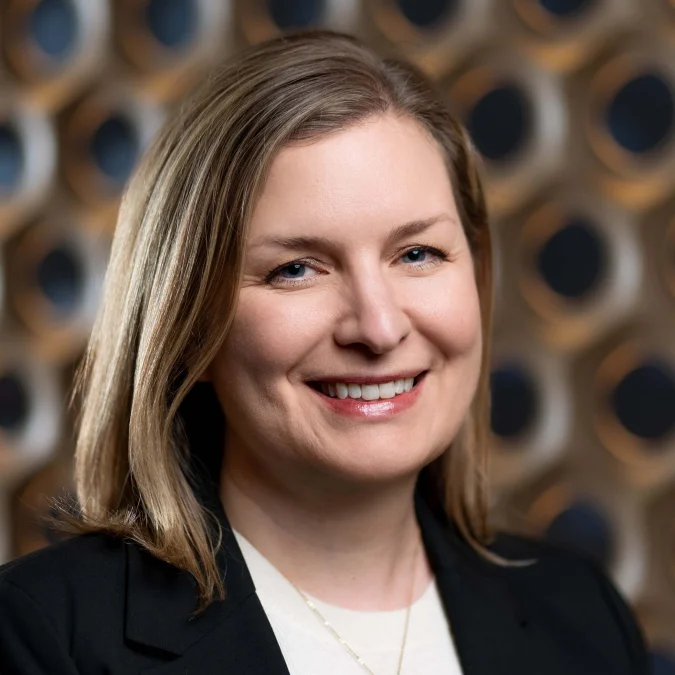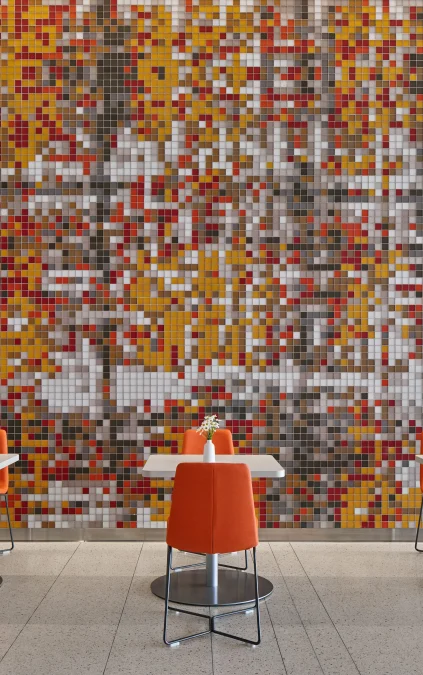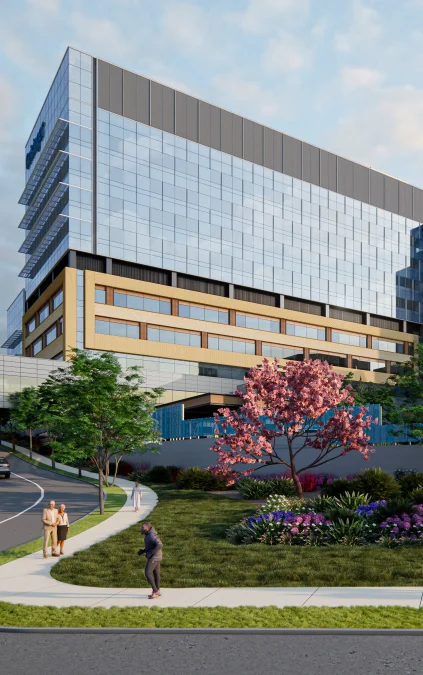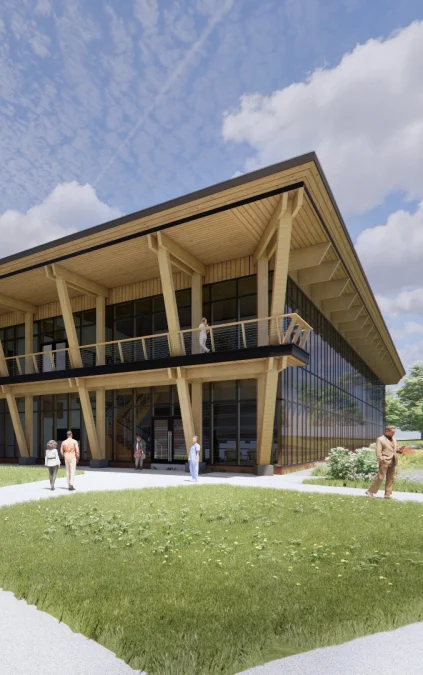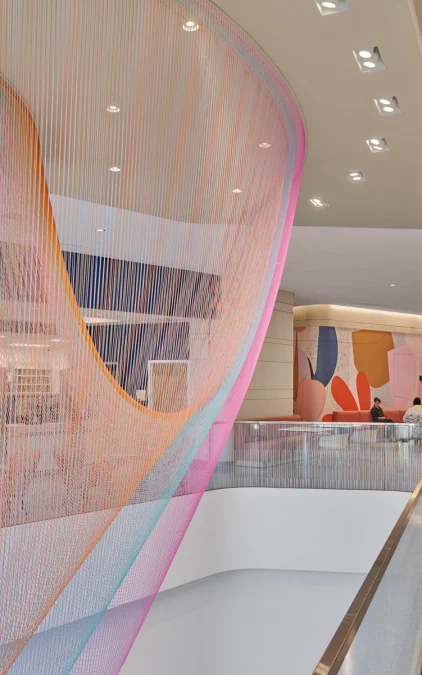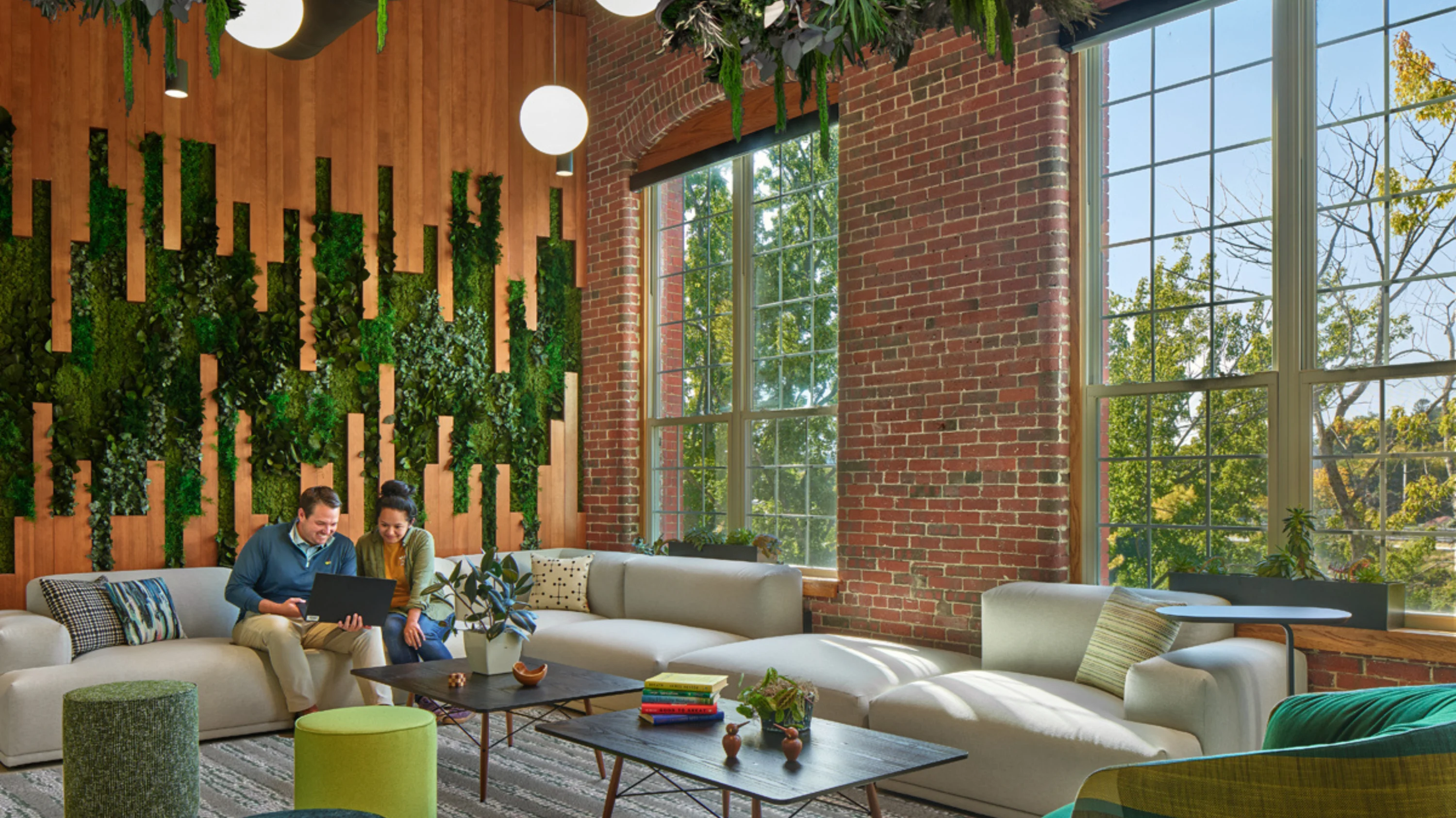
Modern Workplace Design Drives Employee Culture and Well-Being
Insights
Since the pandemic, our attitudes toward everything—particularly how we work—have changed dramatically. Most of us grew accustomed to new modes of operation, new habits, and new working styles. The COVID-19 pandemic fundamentally altered our workplace expectations, accelerating trends already reshaping conventional office environments. As we navigate this new landscape, we must design workplaces that prioritize employee well-being and retention.
In response, employers are shifting from traditional office spaces to modern work environments because of their proven impact on employee well-being, productivity, and culture.
“Healthy and happy employees have a better quality of life, a lower risk of disease and injury, increased work productivity, and a greater likelihood of contributing to their communities than employees with poorer well-being,” notes one 2019 study.
The Shift Toward the Hybrid Work Model
Prior to the pandemic, remote work was relatively uncommon. In 2019, only about 6% of employed Americans primarily worked from home. However, the pandemic acted as a catalyst, with this figure rising to approximately 18% by 2021. This shift has led to a significant increase in office vacancy rates, climbing from around 12% pre-pandemic to 16.9% in the fourth quarter of 2023.
The demand for hybrid work schedules remains strong. A recent survey indicates that 35% of workers with jobs that can be performed remotely work from home all the time, and an additional 41% follow hybrid schedules.
To meet evolving expectations, employers are now investing more in solutions that can effectively support higher rates employee satisfaction.
United Therapeutics Corporation – Manchester, NH
Why Variety is Key
Employees want to feel supported and empowered by their space. Interior designer Shannon Andrews, CID, IIDA, LEED GA, says that workplace remodels should empower employees by designing spaces that can accommodate a variety of working styles and modalities.
“We all inhabit the world differently; we all have different needs and expectations of our environment driven by our physical bodies or neurological makeup,” she said.
“To create truly inclusive spaces, we need to provide many options so that anyone can assess everything the space offers and choose the environment that will work best for them.”
RegenXBio – Headquarters – Rockville, MD.
EwingCole Senior Interior Designer Kela Bogaard argues that providing a variety of workspaces and settings also has its advantages over the at-home work environment.
“Flexibility in choosing when and where to work not only accommodates diverse work styles and personal preferences but also fosters a sense of autonomy, contributing to improved job satisfaction and work-life balance,” she said.
While remote work offers flexibility, physical offices provide unique benefits that are difficult to replicate virtually. Kela highlights the role of thoughtfully designed workspaces:
“Thoughtfully designed workspaces, collaborative environments, and amenities can create an inviting atmosphere that motivates employees to come into the office. By incorporating elements that enhance the in-person experience, organizations can strengthen employee connections, reinforce company culture, and promote effective collaboration.”
Collaboration Informs Community Identity
The life sciences industry offers valuable insights into effective workplace design. Because of the nature of their work, most employees in the biopharma or life science industry don’t have the luxury of taking their work home with them, which is why the industry is responsible for nearly a third of all office projects in 2024, according to Commercial Edge. These companies regularly seek to create environments that attract top talent, maintain employee satisfaction, and instill pride in their work.
For instance, senior interior designer Lindsay Casey, NCIDQ, cites IN8Bio’s clinical lab and office building as exemplifying spaces that promote collaboration, which can drive a company’s identity.
“To enhance collaboration and communication, strategically placed meeting spaces break the monotony of traditional office layouts,” she said. “These areas have contemporary furnishings, large glass walls, and cutting-edge audio-visual technology. The transparency of these spaces facilitates teamwork and allows the rustic charm of the surroundings to permeate every corner, creating a unique and inspiring work environment.”
United Therapeutics Corporation – R&D Office Renovation – Manchester, NH
Investment in Your Space is an Investment in People
Providing amenities is more than just ‘perks’; it is an investment in the workforce and reflects a broader understanding of employee needs.
While designing United Therapeutics’ (UT) Research & Development renovation in Manchester, NH, the team first prioritized listening to end-user groups and developing an approach based on their needs.
“We spent a lot of time asking questions and listening – especially at the beginning of our design process. That allowed us to come in with clear goals and to orient our discussions around solutions that addressed specific needs,” said Shannon.
In addition to research laboratories and corporate offices, UT prioritized amenities and creating a space where people want to work.
“We designed a gym, a large flexible cafe and town hall space, a mother’s/ wellness room, and satellite pantries equipped with Top Brewers, a hands-free, tech-enabled barista-style coffee and beverage machine. Our client requested all of these spaces to invest in their employees and prioritize health, well-being, and community,” said Shannon.
“You want to hear your employees say, ‘We are never going to want to leave this space!’ she added. “I would translate that to: ‘I see the investment, thought, and care my company has made in my work environment and, by extension, in me, and I am grateful for it.’”


